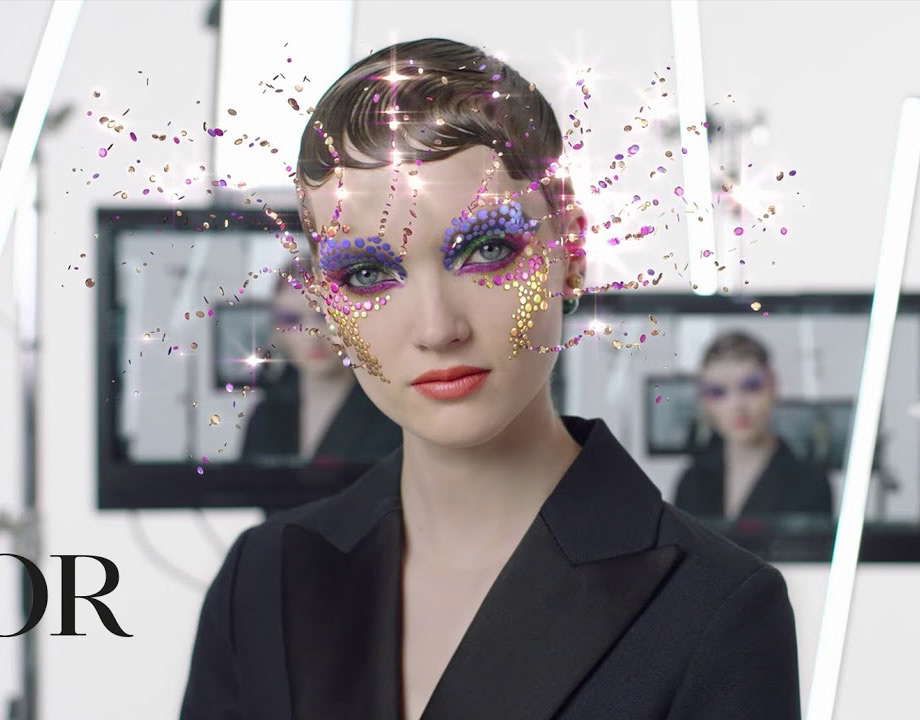Audrey Hepburn in Breakfast at Tiffanys, gothamist.com
As a digital tsunami sweeps up most of what remains of New York City's brick and mortar palaces, I've been mourning the death of the sort of romance they imbued. The sun has been setting for Department stores for a while, but according to industry analysts, this is almost certainly, the beginning of its capitulation.
If we spare a few of these stores, Bergdorf's and Bloomies maybe, their utility will reside in a sort of nostalgic luxury, like the glamor of old Hollywood is perched in the old TCL Chinese Theatre.
While department stores are being reckoned throughout the country, many of them in malls, they mean something entirely different to New York City - a city that is undeniably the runway of American fashion, and to some, of the world.
Central to New York City's seductive aura are those shiny romantic windows that, for a century, lured spectators from all over the world. Like Bemelmans is to timeless New York hospitality, the windows at Barneys and Bergdorf Goodman remained necessary pinnacles of New York fashion! But not anymore.
New York style, although eccentric, has always exuded a certain non-replicable panache, and despite ephemeral trends, was marked by a certain Hepburnesque eternal style-until now. In Covid's wake, we have come to realize- nothing is eternal, not even Audrey.
Vogue, May, 10, 1930,
The New Yorker January 28th 1928
As Matthew Miele (who filmed both Scatter My Ashes at Bergdorf's and Always at the Carlyle) told Vogue, New York department stores "serve to represent a great American story," and the sort of "aspiration" that comes with it. Throughout the 20th century, New York department stores and New York style seemed to have a synergetic relationship. The windows would reflect a dream- that dream would later transpire into the wardrobes of New York society- and later- into the streets.
Bergdorf Goodman 1980
Bergdorf Goodman holds a time capsule of some of American Fashion's most iconic moments. Remember when Yoko and John called for ten trunks of mink to be delivered to the Dakota? Or when Elizabeth Taylor demanded 200 pairs of bespoke earmuffs for her trip to Gstaad? Today, both celebrities would have been immediately shunned by PETA and canceled by Diet Prada.
But no matter how outrageous, both anecdotes speak to the unfettered extravagance and bedazzlement that was the Bergdorf way, and the New York way- for a while at least.
But like the invention of the television sucked up all the glitter out of Hollywood, e-commerce has inevitably done the same with New York's old retail palaces.
Now- their digital ineptness aside, there's not a lot of demand for anything in those stores right now. Couture wasn't designed to be gallivanted around the house, there's a social- see and be seen- cadence to couture.
Vanity Fair: Elizabeth Taylor was one of Bergdorf Goodman's most loyal A list customers
Vanity Fair
As Anna Wintour makes way for the Girl Boss and a more progressive fashion landscape begins to take shape, it may be time to board up the once shiny palaces of the fashion establishment.
One could argue that dethroning Bergdorf Goodman and Barney's as the great dictators of wholesale trends is, in a sense, democratizing fashion. Now D2C has opened up the fashion valve to a vaster group of aspiring designers, and that has undermined the luxury department stores entire value proposition.
To a young designer trying to rise through the ranks- Barneys, Bergdorfs, and Bloomingdales was your in- card- especially Barneys. Barneys was the bouncer outside the cool downtown club.
For decades these department stores dictated the "a la mode." They had prestigious power.
Now however, pretty much every brand that you would have discovered at Barneys or Bergdorfs a decade ago are D2C. The sort of exclusivity that these luxury wholesalers hinged on-has elapsed. They are no longer necessary entry points for designers. The route to customer acquisition is digital.
And now that brands have become stewards of the consumer's desires rather than dictators, those once beguiling windows are more fantastic- more art than aspirational.
To sum it up- New York retail used to be an "on the outside looking in" world, and thats what the windows stood for-now that digital has empowered consumers- retail has become a mirror-the consumer wants to see her(his) reflection.
Bergdorf Goodman ad 1945
Bergdorf Goodman ad 1963
Looking forward, the question is: can the sort of romance and aspiration that New York department stores once instilled be replicated digitally? Is there really anything glamorous about curbside pickup? Or is it time to opt out of glamour altogether? In today's world, is there even room for glamour?
NY Times: The windows at Saks Fifth Avenue: "When Department Stores Were Theatre"
Digital is being amped up at every point of the value chain, what was already becoming an increasingly virtual landscape is now domineeringly hyper-digital. Digital laggards that improvidently hinged on brick and mortar were already beginning to teeter in the face of D2C domination. Now, they will be pushed to the brink, some driven to extinction.
We are entering an age of extreme digital. Digital can no longer be an asset but the necessary cornerstone of every company's business model. Digital-first strategies are required. Digital-ish won't fly.
We are talking 3D design tools, bespoke design, virtual sampling, digital makeovers, and most recently digital runways which have served to disappoint a lot of viewers.
As brands pack up camp and move almost entirely to digital avenues, what's going to happen to Madison Avenue? What would the Manhattan streetscapes even look like without department stores?
Untappedcities.com
With most of U.S. retail having opened back up in the last couple of months, many brands are rethinking the stores purpose, transfiguring them and reengineering them. Due to the physical store's experiential and tactile value, I don't think the physical store will ever lose its allure entirely, but its locations will likely become fewer, more tactical, and hold fewer hours of operation.
The store will no longer act as a sales vehicle in itself, but as a means to a digital end, serving to facilitate e-commerce channels, a sort of experiential brand equity asset if you will to help drive online transactions.
Some stores might look to translate store fronts into distribution hubs, inventory warehouses, and fulfillment centers.
Yet, even as the economy continues to open up, and despite stores being repurposed, I think some margins might prove too thin to justify any overhead cost. Maybe we'll see a second round of closures.
The New York Times: Soho Manhattan during the lockdown in March
The future of retail is in entertainment. Now it's just a waiting game until entertainment is fully possible-which likely won't be until there is a vaccine.
But down the pike, once the dust begins to really settle, stores likely won't draw the crowds they used to. The desire to go to a department store will become ever more comparable to one's desire to go to a movie theatre.
And as this age of instant gratification gets more instantaneous, the desire for even that sort of experience will be much, much less.
Right now, if I have to leave bed, put a mask on, and get my temperature taken, it better be a damn good experience.
Enter digital Darwinism, but has technology submerged culture? I won't remember sitting in my bed ordering from Amazon, but I'll remember the pair of heels I tried on for my 23rd birthday at Bloomingdales and how Magnolias tasted so good after a long shopping day. Is there really an art to e-commerce?




